Feast of All Saints – and what 20th and 21st century saints look like.
Some weeks ago we posted material on Carlo Acutis and young martyrs in Quiche. Here are some more stories.
RICHIE FERNANDO
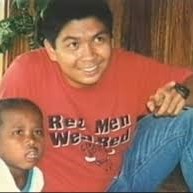
Brother Richie Fernando was a 26 year-old Jesuit seminarian from the Philippines when in 1996 he died protecting his Cambodian students from a hand grenade.
He is now on the road to sainthood, thanks to a norm issued by Pope Francis this summer that opens the door to canonization for those who have “voluntarily and freely offered their lives for others and have persevered until death in this regard.”
Father Antonio Moreno, head of the Jesuits in the Philippines, told Rappler July 30 that the order had received permission to begin the initial work of opening Brother Fernando’s cause for canonization.
Brother Richard (Richie) Fernando, S.J., arrived in Cambodia in 1995 to serve at a Jesuit mission which served people who had been disabled by polio, landmines, or other accidents.
According to the Jesuits of the Asia Pacific Conference, Richie quickly earned the trust of his young students as he learned their native language and took the time to listen to their stories of suffering.
One of his students was an orphan named Sarom, who became a soldier at 16 and was maimed by a landmine. Even while some at the mission found Sarom’s attitude troublesome, Richie wrote in letters to friends that Sarom still had a place in his heart.
On October 17, 1996, Sarom came to the mission school for a meeting with the school director and staff. While he had finished classes, he had asked to continue at the school, though his request was denied because school officials found him disruptive.
Angered, Sarom suddenly reached into his bag and pulled out a grenade, and moved towards a classroom full of students. The windows of the classroom were barred, so the students were trapped.
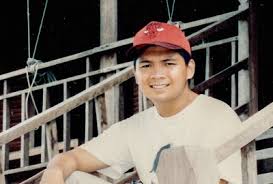
Brother Richie stepped behind Sarom and grabbed him to prevent him from throwing the grenade.
“Let me go, teacher; I do not want to kill you,” Sarom pleaded. But he dropped the grenade, and it fell behind him and Brother Richie, exploding and killing the Jesuit, who fell over Sarom, protecting him and everyone else in the school from the blast.
Just four days before he died, Riche had written a long letter to his friend and fellow Jesuit, Totet Banaynal SJ: “I know where my heart is. It is with Jesus Christ, who gave all for the poor, the sick, the orphan … I am confident that God never forgets his people: our disabled brothers and sisters. And I am glad that God has been using me to make sure that our brothers and sisters know this fact. I am convinced that this is my vocation.”
He had also once written about death in a retreat diary, in which he said: "I wish, when I die, people remember not how great, powerful, or talented I was, but that I served and spoke for the truth, I gave witness to what is right, I was sincere in all my works and actions, in other words, I loved and followed Christ,"
In 1997, Richie’s parents wrote to King Norodom Sihanouk of Cambodia, asking pardon for Sarom. Again, Sarom said he had never wanted to kill Richie, who he considered a friend.
While the Philippines is a Catholic-majority country, the island nation only claims two canonized saints thus far, both of whom died in the 17th century: St. Lorenzo Ruiz, a martyr of Nagasaki, and St. Pedro Calungsod, a martyr of Guam.

However, numerous causes have been opened in recent years, with many people in the various steps of the process of canonization.
On July 31, the feast of Jesuit founder St. Ignatius of Loyola, Fr. Moreno said Richie is among many Jesuits who have imitated Saint Ignatius, "offering themselves in the self-sacrificing service of God and his people."
In his memo to the Philippine Province of the Society of Jesus, Fr. Moreno noted that "various expressions of devotion to Richie have sprung up and continued, not just in the Philippines and Cambodia but in other places as well."
This includes a Facebook group in his honor, named: "Friends of Bro. Richie R. Fernando SJ."
The next step for Brother Richie’s cause involves building a compelling case for his life of virtue through his writings, talks, and interviews with those who knew him, among other things.
PIER GIORGIO FRASSATTI
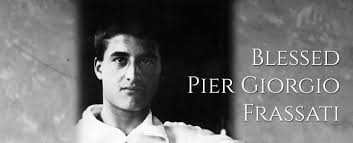
Referred to as the “Man of the Eight Beatitudes” by Pope John Paul II when Pier Giorgio was beatified in St. Peter’s Square on May 20, 1990, this young man is a perfect role model for today’s teens and young .
Sure, he was devoted to God, but if you look into his life, you will find someone who was fun-loving, athletic, dynamic, dutiful, friendly, interested in others, and loving towards his friends and family. Throughout his life he was able to stay true to himself while staying true to God. And isn’t that exactly what we want for our own children?
He was born in Turin into a wealthy family, who owned a newspaper called La Stampa. Though an average student, Frassati was known among his peers for his devotion and piety.
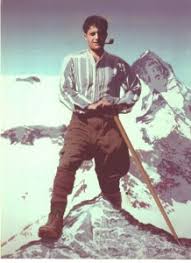
He was dedicated to works of social action, charity, prayer and community. He was involved with Catholic youth and student groups, the Apostleship of Prayer, Catholic Action, and was a third order Dominican. He would often say, "Charity is not enough; we need social reform." He helped establish a newspaper entitled Momento, whose principles were based on Pope Leo XIII's encyclical: Rerum Novarum.
Despite his family's enormous wealth and power, Frassati's father was austere and never gave his children too much spending money. Frassati, however, donated most or all of his money to people he saw as more "needy" than him, and as a result he became accustomed to giving his train-fare to the poor and running back home or riding in third class.
Despite the many organizations to which Frassati belonged, he was not a passive "joiner"; records show that he was active and involved in each, fulfilling all the duties of membership. He was strongly anti-fascist and did nothing to hide his political views.
Participating in a Church-organized demonstration in Rome, he withstood police violence and rallied the other young people by grabbing the banner which the police had knocked out of someone else's hands. He held it even higher while using the pole to ward off their blows. When the demonstrators were arrested by the police, he refused special treatment that he might have received because of his father's political position, preferring to stay with his friends. One night a group of fascists broke into his family's home to attack him and his father, but Frassati beat them off single-handedly chasing them down the street.
Frassati died in 1925 of poliomyelitis. His family expected Turin's elite and political figures to come to offer their condolences and attend the funeral; they naturally expected to find many of his friends there as well. They were surprised, however, to find the streets of the city lined with thousands of mourners as the cortege passed by. Poor people from the city petitioned the Archbishop of Turin to begin the cause for canonization. The process was opened in 1932 and he was beatified on 20 May 1990. Blessed Pier Giorgio Frassati's feast day is 4 July.
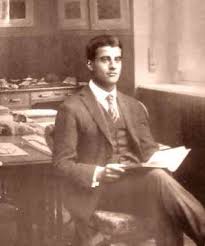
Frassati was called Man of Eight Beatitudes by Pope John Paul II, who beatified him on 20 May 1990.
LAUREANA ‘KA LURING’ FRANCO
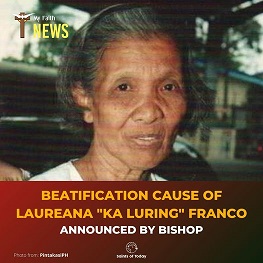
On the 9th death anniversary of Laureana "Ka Luring" Franco, Catechist of Taguig and a Papal Awardee, Bishop Mylo Vergara, DD, Bishop of the Diocese of Pasig, announced the formal opening of the cause for her beatification that will take place in 2021 in line with the 10th death anniversary of Ka Luring and the 500th anniversary of the Christianity in the Philippines.
And a final story – you’re never too young
NELSON SANTANA, BRAZIL
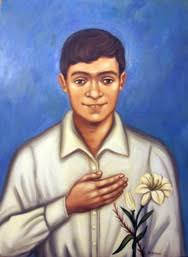
Pope Francis yesterday recognised the heroic virtue of a nine-year old Brazilian boy who “never complained” during cancer treatments, but instead offered his suffering to Jesus. Source: CNA.
Diagnosed in 1963 with osteosarcoma, Nelson Santana, then eight years old, asked his mother in the hospital to “promise Jesus not to complain in the face of suffering and pain.”
A nurse and religious sister who cared for Nelson noted the child’s “extraordinary ability” to understand the meaning of the suffering of Christ. The sister ensured Nelson continued to receive religious instruction in the hospital, where he also received his first communion.
When told that his cancerous arm had to be amputated, Nelson responded that “pain is very important to increase true love and courageously maintain the love already conquered.”
He died of cancer on Christmas Eve 1964 at the age of nine.

The Vatican Congregation for the Causes of Saints recognised the heroic virtue of Nelson and six other Servants of God, advancing them along the path to sainthood as “venerable.”